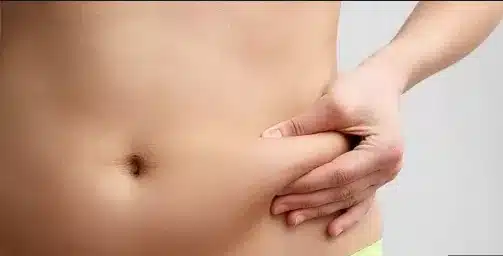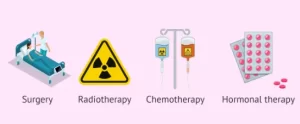The Tummy tuck, or abdominoplasty, is a surgical procedure that aims to reshape and contour the abdomen by removing excess skin and fat. It is a popular cosmetic surgery option for individuals who struggle with loose abdominal skin, stretched muscles, and stubborn fat deposits resistant to diet and exercise. Abdominoplasty surgery can provide a flatter, firmer, and more toned abdomen, restoring confidence and improving body proportion.
How is Abdominoplasty Surgery Performed?
Here is an overview of the typical steps involved in a tummy tuck procedure:
- Anesthesia: The surgery begins with administering anesthesia, which can be either general anesthesia (where you are asleep) or local anesthesia with sedation (where you are awake but numbed and relaxed).
- Incision Placement: The surgeon will make an incision in the lower abdominal area, typically along the bikini line. The length and shape of the incision may vary depending on the extent of correction needed and the desired results.
- Excess Skin and Fat Removal: The surgeon will carefully lift the abdominal skin and remove excess skin and fat. This may involve separating the skin from the underlying tissue and using surgical techniques, such as liposuction, to remove stubborn fat deposits.
- Muscle Repair: If the abdominal muscles have weakened or separated due to factors like pregnancy or weight fluctuations, the surgeon will tighten and repair them. This step helps create a firmer and more defined abdominal contour.
- Skin Redraping: After the excess skin and fat have been removed, the remaining skin is redraped over the abdomen to create a smoother and tighter appearance. The surgeon will carefully close the incisions, often using sutures or surgical adhesives.
- Drains and Dressings: Sometimes, the surgeon may place small drainage tubes under the skin to prevent fluid accumulation. Dressings and a compression garment may also support the healing process and provide post-operative support.
- Recovery and Follow-Up: After the surgery, you will be taken to a recovery area, where you will be monitored closely. The surgeon will provide detailed post-operative instructions on caring for the incisions, managing discomfort, and gradually resuming activities. Follow-up appointments will be scheduled to assess healing progress and remove drains or sutures.
It’s important to note that the specific details of an Abdominoplasty procedure can vary depending on individual factors and the surgical approach chosen by the surgeon. It’s essential to consult with a qualified and experienced plastic surgeon who will evaluate your unique needs and goals to determine the most appropriate technique for you.

Remember, this is a general overview, and it’s crucial to have a comprehensive discussion with your surgeon to understand the details of your Abdominoplasty procedure.
Types of Abdominoplasty:
Different types of tummy tuck surgeries can be tailored to address varying degrees of abdominal concerns. The specific technique your surgeon recommends will depend on factors such as the amount of excess skin and fat, muscle laxity, and your desired outcome. Here are some common types of tummy tuck surgeries:
- Traditional or Full Abdominoplasty: This is the most common type of Abdominoplasty surgery. It involves a horizontal incision from hip to hip, just above the pubic area. The surgeon removes excess skin and fat, tightens the abdominal muscles, and repositions the belly button if necessary.
- Mini Abdominoplasty: This procedure suits patients with less pronounced abdominal concerns, primarily limited to the area below the belly button. It involves a smaller incision and focuses on addressing the lower abdomen. The belly button is typically not repositioned during a mini Abdominoplasty.
- Extended Abdominoplasty: An extended abdominoplasty is recommended for individuals with significant excess skin and fat extending to the sides or flanks. It involves a longer incision that continues beyond the hip area, allowing for more extensive removal of excess tissue.
- Fleur-de-Lis Abdominoplasty: This technique is employed for patients with vertical and horizontal excess skin. It involves an additional vertical incision along the midline, resulting in a “T” or “anchor” shaped scar. The fleur-de-lis Abdominoplasty allows for the comprehensive removal of excess skin and fat, resulting in a more significant transformation.
- Reverse Abdominoplasty: The reverse tummy tAbdominoplastyuck is less standard and typically performed with an upper body lift or breast lift. It involves an incision along the breast crease or under the breasts, allowing the surgeon to lift and tighten the upper abdominal area.
Difference between Abdominoplasty and Liposuction:
Both Abdominoplasty and liposuction address concerns related to the abdominal area; they are distinct procedures with different objectives. Liposuction removes excess fat deposits from specific areas, such as the abdomen, thighs, or hips. It is suitable for individuals with good skin elasticity and muscle tone but struggling with localized fat pockets.
On the other hand, tummy tucksurgery goes beyond fat removal and addresses loose skin and weakened abdominal muscles. It is ideal for individuals who have experienced significant weight loss, pregnancy, or aging, resulting in sagging skin and muscle laxity. Tummy tuck surgery removes excess skin and fat and tightens the underlying muscles to create a more sculpted and contoured abdomen.
Recovery Time for Abdominoplasty:
The recovery time for tummy tuck surgery can vary depending on individual factors and the extent of the procedure. Generally, patients can expect a recovery period of about 2 to 4 weeks before they can resume normal activities. During the initial phase of recovery, patients may experience swelling, bruising, and discomfort.

Age for Abdominoplasty:
The appropriate age for undergoing an Abdominoplasty procedure can vary depending on individual circumstances. In general, it is recommended that patients be at least 18 years old and have reached a stable body weight before considering tummy tuck surgery. However, the procedure’s suitability is assessed case-by-case, considering factors such as overall health, medical history, and specific goals.
According to the Aedit website:
Tummy tuck surgery is not for everyone, and patients should discuss their options with a board-certified plastic surgeon to determine whether this surgery is suitable for them. In general, candidates that suffer from certain illnesses or general health problems might not be suitable for an abdominoplasty.
Benefits of Abdominoplasty:
- Improved Abdominal Contour: tummy tuck surgery can provide a flatter, more contoured abdomen by removing excess skin and fat.
- Tightened Abdominal Muscles: The procedure involves repairing and tightening the weakened or separated abdominal muscles, resulting in a firmer and more toned midsection.
- Reduced Stretch Marks: tummy tuck surgery can help diminish the appearance of stretch marks, particularly those on the lower abdomen.
- Enhanced Body Proportion: By addressing loose skin and excess fat in the abdominal area, tummy tuck surgery can improve overall body proportion and silhouette.
- Improved Confidence and Self-Esteem: A flatter and more defined abdomen can significantly boost self-confidence and enhance body image.
Summary:
Abdominoplasty surgery offers individuals an effective solution to address concerns about excess abdominal skin, fat, and weakened muscles. With its ability to reshape and contour the abdomen, tummy tuck surgery can provide long-lasting results and help individuals achieve a more confident and proportionate physique. However, it is crucial to consult with a board-certified plastic surgeon, discuss expectations, and understand the potential risks and benefits before undergoing the procedure.

Fun fact: Did you know that Abdominoplasty, commonly referred to as a Tummy Tuck, is a game-changer for many people looking to transform their abdominal area? It’s a popular choice for those seeking Belly Contouring after significant weight loss or post-pregnancy.
In fact, many opt for a combination of Abdominoplasty and Liposuction to achieve the ideal waistline. These procedures fall under the umbrella of Plastic Surgery, which offers a wide range of Body Contouring options. While Abdominoplasty is perfect for tightening saggy skin and strengthening the abdominal muscles, Liposuction is often used to remove excess fat.
Whether it’s part of a Post-pregnancy Makeover or a personal choice to enhance one’s self-confidence, these treatments have helped countless individuals achieve their body goals.
FAQs:
- Is Abdominoplasty surgery painful? This surgery is performed under anesthesia so patients do not experience pain. However, there will be some discomfort during recovery.
- Will an Abdominoplasty remove all stretch marks? A tummy tuck can improve the appearance of stretch marks on the lower abdomen, but it cannot altogether remove them.



